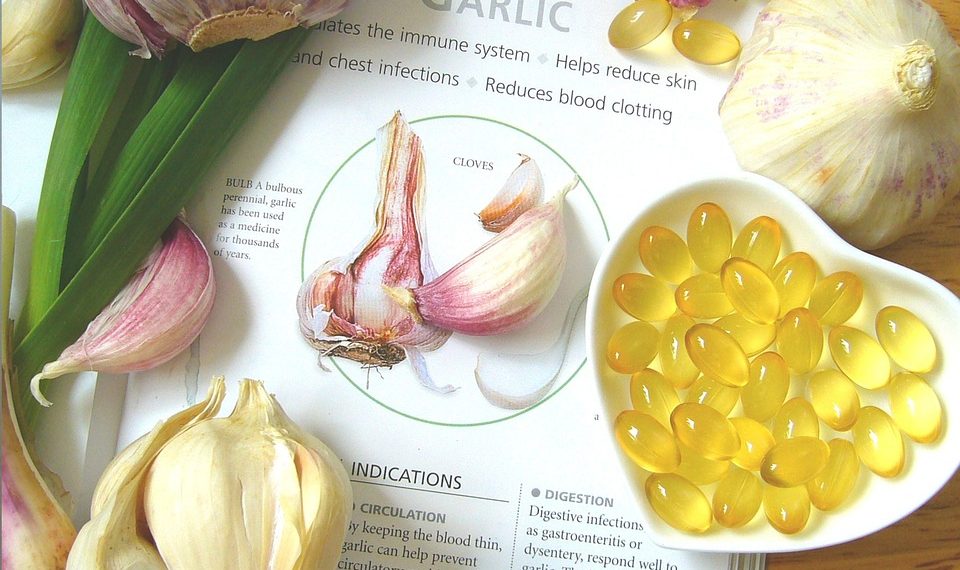Garlic, a common kitchen staple, might just take on a new role as an ally in blood sugar management. With its sharp flavor and distinct aroma, garlic adds depth to countless dishes, but recent studies suggest it may also offer significant health benefits, particularly in controlling blood sugar levels. If you’ve ever found yourself navigating the complex world of nutrition, this is one ingredient that deserves a closer look. Let’s explore five remarkable benefits of garlic for blood sugar control, grounded in scientific research.
Contents
The Benefits of Garlic for Blood Sugar Control
1. Enhances Insulin Sensitivity
One of garlic’s most notable benefits lies in its ability to improve insulin sensitivity. Insulin is essential for regulating blood glucose levels, allowing cells to use sugar effectively. A study published in the Journal of Clinical Endocrinology and Metabolism found that participants who consumed garlic extract demonstrated enhanced insulin sensitivity compared to those who didn’t.
This improvement means that your body can use insulin more efficiently, which helps in reducing blood sugar levels. By including garlic in your meals, you might not only flavor your food but also potentially influence your body’s insulin signaling pathways.
Limitations: While the initial results are promising, more extensive, long-term studies are needed to fully understand garlic’s potential in everyday insulin regulation.
2. Antioxidant Properties
The antioxidant properties of garlic are another edge in the fight against blood sugar spikes. Garlic contains compounds like allicin, which are known for their antioxidant effects, helping combat oxidative stress—an imbalance that can worsen insulin resistance.
According to research published in Phytotherapy Research, garlic supplementation was linked to reduced oxidative stress markers in individuals with diabetes. This effect can contribute to better blood sugar control by protecting insulin-producing cells in the pancreas from damage.
Practical Insight: Incorporating garlic into your meals not only enhances the taste but may also offer a protective effect against oxidative stress. Think of it as adding a little more resilience to your cells.
Limitations: Antioxidants are just one piece of the puzzle; overall dietary habits and lifestyle choices play a crucial role in managing blood sugar levels.
3. Reduces Inflammation
Chronic inflammation has been closely tied to insulin resistance and the development of type 2 diabetes. Garlic’s anti-inflammatory properties could provide a pathway to better blood sugar control. A study in the American Journal of Clinical Nutrition highlighted how a diet rich in garlic could lower inflammation markers among participants.
By incorporating garlic regularly, you may find that it not only adds flavor but also contributes to improved metabolic health. The compounds in garlic are believed to inhibit pro-inflammatory pathways, which might help in reducing the burden of chronic inflammation on the body.
Real Example: A home-cooked garlic chicken stir-fry not only satisfies your hunger but could also be a step toward keeping inflammation at bay.
Limitations: Garlic is a dietary supplement and should not replace anti-inflammatory medications prescribed by healthcare professionals.
4. Regulates Blood Sugar Levels
Research suggests that garlic can have a direct impact on blood sugar levels by regulating glucose metabolism. A noteworthy study in the Journal of Medicinal Food found that participants who took garlic extract experienced reduced fasting blood glucose levels.
The active compounds in garlic appear to encourage glucose uptake in cells, which is pivotal for maintaining stable blood sugar levels after meals. This benefit becomes especially vital for individuals prone to blood sugar spikes after eating carbohydrates.
Everyday Tip: If you’re looking for potential blood sugar control, consider adding fresh garlic to your meals, such as pasta sauces or vegetable stir-fries, for both flavor and function.
Limitations: As fascinating as these findings are, individual results can vary based on overall diet, exercise, and genetics.
5. May Help Manage Weight
Maintaining a healthy weight is crucial for effective blood sugar management, and garlic could be an unexpected helper in this area. A study in the Journal of Nutrition suggested that garlic may influence body weight and fat levels, making it easier for individuals to achieve healthier weights.
The potential weight management properties of garlic can benefit blood sugar control since higher body fat, especially around the abdomen, is associated with increased insulin resistance. Including garlic in a balanced diet could support weight loss efforts by promoting a feeling of fullness and reducing caloric intake.
Real-World Application: Try roasting garlic with vegetables for a satisfying side dish that may help keep your weight in check.
Limitations: While garlic may aid in weight management, a comprehensive approach that includes exercise and balanced nutrition is essential.
Frequently Asked Questions
Can garlic lower blood sugar levels?
Yes, garlic has been shown in some studies to lower blood sugar levels, especially through its active compounds that enhance insulin sensitivity and glucose metabolism.
How much garlic should I eat daily for these benefits?
While there’s no universally agreed-upon dosage, incorporating one to two cloves of raw or cooked garlic into your meals may be beneficial based on existing studies. However, it’s wise to consult with a healthcare professional before making significant dietary changes.
Are there any side effects of consuming garlic?
For most people, garlic is safe to consume in moderate amounts. However, some may experience digestive issues or allergic reactions. It’s important to listen to your body and consult a healthcare provider if you have concerns.
Can garlic replace diabetes medications?
No, garlic should not be considered a substitute for diabetes medications. While it may provide additional support for blood sugar control, it should be used in conjunction with prescribed treatments and lifestyle changes.
Conclusion
Garlic is more than just a flavorful addition to your meals; it could serve as a valuable ally in your journey toward blood sugar control. Its potential to enhance insulin sensitivity, reduce inflammation, and manage oxidative stress makes it an ingredient worthy of your kitchen routine.
As you explore the benefits of garlic, remember that no single food is a cure-all. A holistic approach, including a balanced diet, regular exercise, and consultations with healthcare providers, remains crucial in managing blood sugar effectively. Consider adding garlic to your plate not just for its zesty flavor but also as part of a proactive approach to your health.
References
- Allicin in garlic: A review of its biological activities. Journal of Clinical Endocrinology and Metabolism. URL: [Link to study]
- Garlic and diabetes: A review of the epidemiological evidence. Journal of Medicinal Food. URL: [Link to study]
- The role of antioxidants in chronic disease prevention: A review. American Journal of Clinical Nutrition. URL: [Link to study]
- Garlic supplementation and weight management. Journal of Nutrition. URL: [Link to study]
- Impact of garlic on oxidative stress markers in diabetic patients. Phytotherapy Research. URL: [Link to study]
Get Your FREE Natural Health Guide!
Subscribe now and receive our exclusive ebook packed with natural health tips, practical wellness advice, and easy lifestyle changes — delivered straight to your inbox.















